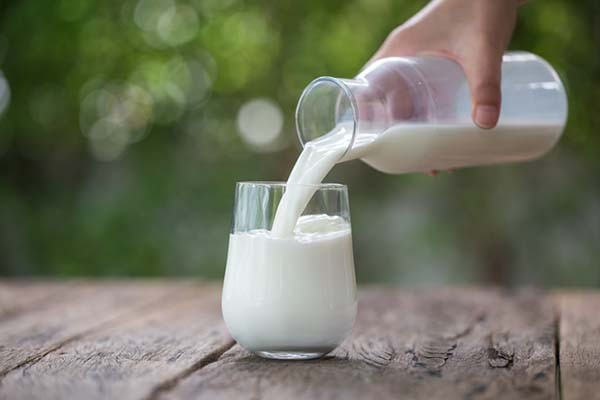Why drinking raw milk can be dangerous
- Reviewed by Michelle Chan, MD, Contributor; Editorial Advisory Board Member, Harvard Health Publishing

Despite some claims to the contrary, drinking raw milk is not safe. Health experts say that germs in raw milk could make you seriously ill.
What is raw milk?
Raw milk comes from animals such as cows and goats. It is not pasteurized to kill germs.
Some people think raw milk tastes better than milk that has been pasteurized. Among the health claims surrounding raw milk are that it can cure lactose intolerance, treat allergies, and support gut health. However, extensive research has shown that none of these myths are true.
In fact, drinking raw milk can be hazardous to your health, explains infectious disease specialist Dr. Michelle Chan of Beth Israel Deaconess Hospital. "I'm alarmed that drinking raw milk has become a trend," she said. "There's a good reason why foods and drinks are pasteurized now."
What are the health risks of consuming raw milk?
Raw milk can carry dangerous germs that can cause food poisoning. Most people with food poisoning experience some combination of abdominal cramping, vomiting, and diarrhea.
Germs that may be found in raw milk and that can cause food-borne illness include Salmonella, E. coli, Listeria, and Campylobacter.
Anyone who drinks raw milk can become sick. But it is especially dangerous to:
- babies, young children, and teenagers
- pregnant women
- older adults
- people with a weakened immune system, including those with cancer, diabetes, or HIV/AIDS, and those who have had an organ transplant.
In the U.S., it is illegal to sell raw milk across state lines, and raw milk is banned in about half of U.S. states. Among states that allow it, most specify that it must come directly from a farmer.
Good hygiene practices on farms can lower the risk of contamination; however, they cannot guarantee that their raw milk is safe from dangerous germs.
Bird flu and raw milk
In March 2024 there was a multistate outbreak of bird flu in dairy cows, the first time that bird flu viruses had been found in cows.
There currently is limited information about whether the virus could be transmitted to humans through raw milk from infected cows. A letter published in the New England Journal of Medicine reported high levels of the virus in raw milk from infected cows. And the FDA recommends that farmers not manufacture or sell raw milk from cows showing symptoms of bird flu, or cows who have been exposed to it.
In a study designed to simulate commercial milk processing, the FDA and USDA found that the most commonly used pasteurization time and temperature requirements effectively inactivated the bird flu virus in pasteurized milk.
What is pasteurization?
Pasteurization is a process that kills germs in foods by using heat. Pasteurized milk is heated to at least 145° Fahrenheit and then quickly cooled. The process was invented by scientist Louis Pasteur in 1864.
Does pasteurized milk have the same nutritional benefits as raw milk?
Multiple studies have found no evidence that raw milk is more nutritious than pasteurized milk. According to the CDC and FDA, pasteurized milk offers the same nutritional benefits as raw milk, but without the risks.
Drinking raw milk means taking a big chance with your health, Dr. Chan believes. "My advice," she said, "is to take heed of the research, be aware of the risks associated with drinking raw milk, and in general, avoid drinking it."
About the Author

Lisa Catanese, ELS, Health Writer
About the Reviewer

Michelle Chan, MD, Contributor; Editorial Advisory Board Member, Harvard Health Publishing
Disclaimer:
As a service to our readers, Harvard Health Publishing provides access to our library of archived content. Please note the date of last review or update on all articles.
No content on this site, regardless of date, should ever be used as a substitute for direct medical advice from your doctor or other qualified clinician.















